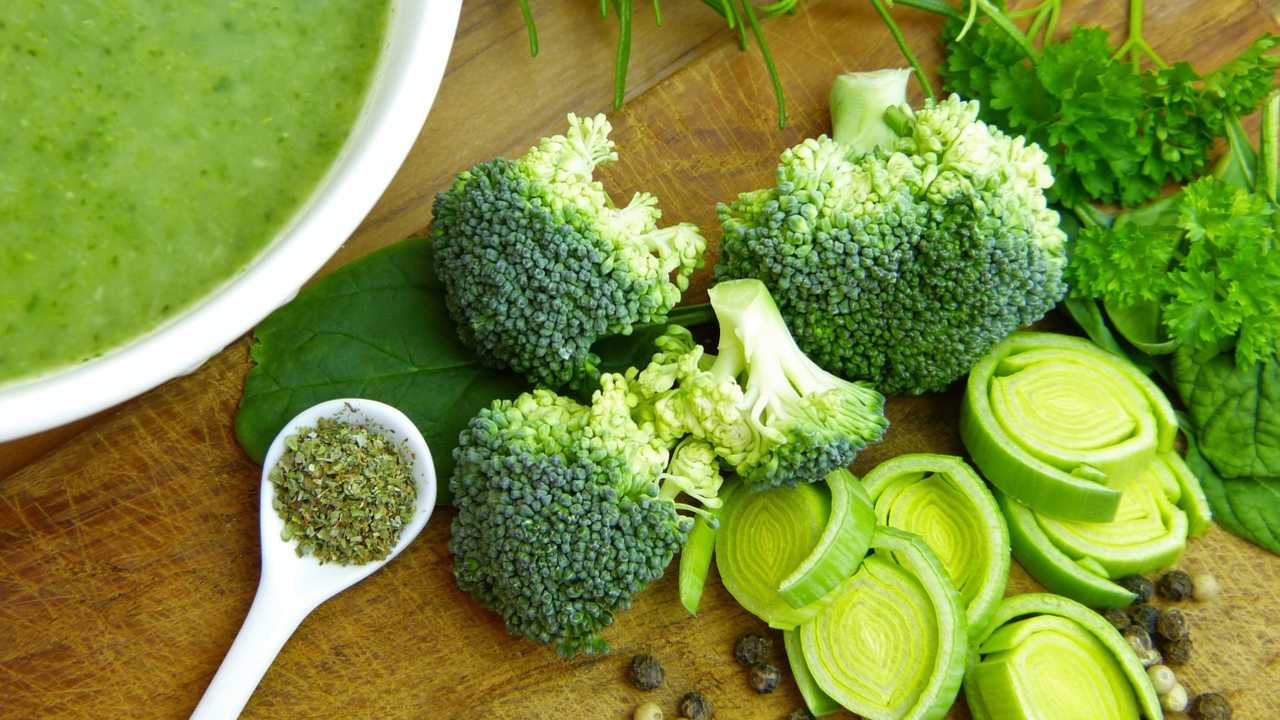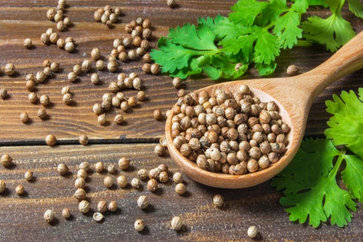How to Increase Platelet Count Naturally? Ayurveda Tips
Human blood is comprised of a variety of different cells, each with its own specific role. These cells include red blood cells, white blood cells, and platelets. Platelets play a crucial role in the process of blood clotting, which is essential for stopping bleeding when we get injured, whether it’s a minor cut or a more serious wound.
For platelets to function effectively, it’s imperative for us to maintain good physical health. However, certain medical conditions can lead to a significant reduction in platelet count, posing potential risks to overall health.
Low platelet counts can result in not only minor bleeding from small cuts and bruises but also potentially life-threatening bleeding, such as internal bleeding within the gastrointestinal tract or around the brain.
Therefore, it is essential to understand how to increase platelet count, whether through medical intervention or natural methods. In this article, we will briefly explore natural ways to boost platelet counts in various clinical conditions.
What are Platelets?
In simple terms, platelets are the blood’s clotting agents. When the lining of blood vessels gets damaged, platelets come together and stick to each other to seal the injury. Typically, a healthy person has around 1.5 to 4 lakh platelets per microliter of blood.
If this count drops below 1.5 lakh, it’s known as thrombocytopenia, while a count exceeding 4 lakh is termed thrombocytosis. The fascinating thing about platelets is their shape. When they’re inactive, they resemble small plates.
However, when they receive signals from damaged blood vessels, they change shape, becoming sticky and capable of sealing bleeding. It’s worth noting that excessive platelet activation can contribute to heart attacks.
When blood vessels in the heart are damaged, platelets gather and form a clot called a thrombus. This clot can completely block a blood vessel, leading to a heart attack.
To treat such cases, medications are used to reduce platelet activation and prevent clot formation. These drugs are known as antiplatelet agents and include aspirin, clopidogrel, prasugrel, and ticagrelor.
Sometimes, platelet counts can drop significantly, leading to thrombocytopenia. This condition can result from viral infections, like dengue fever, certain bone marrow disorders such as leukemia or lymphoma, chemotherapy for cancer, specific medications, or excessive alcohol consumption. That’s why it’s crucial to explore natural methods for increasing platelet counts.
What is the Normal Count of Blood Platelets
1. Thrombocytosis (high platelet level):
Platelet Count: 450,000 μL (per microliter)
Description: Thrombocytosis can lead to excessive internal clotting, especially in the limbs. Clots may break free and become lodged elsewhere in the body, potentially causing further complications.
This condition is often observed in individuals who are bedridden due to factors like old age, illness, or recovery from injury.
2. Normal Platelet Level:
Platelet Count: Ranges from 150,000 to 450,000 μL
Description: The normal platelet count varies among individuals and depends on factors such as age, sex, and other personal characteristics.
3. Thrombocytopenia (low platelet level):
Platelet Count: 150,000 μL or lower
Description: Thrombocytopenia is associated with a heightened risk of excessive bleeding, even from minor injuries and cuts. Extremely low platelet levels can lead to spontaneous bleeding.
It can be caused by various factors, including injury, surgery, intense physical activity, vitamin B12 deficiency, viral or other infections, anemia, cancer, autoimmune disorders, and more.
Causes of Low Platelet Count
Several factors can contribute to a low platelet count due to decreased production in the bone marrow. These factors include:
1. Different types of anemia: Various forms of anemia, such as aplastic anemia or myelodysplastic syndrome, can hinder the production of platelets in the bone marrow.
2. Viral infections: Certain viral infections, like hepatitis C, HIV, or Epstein-Barr virus, can disrupt platelet production.
3. Chemotherapy drugs: Medications used in chemotherapy, which are often necessary for treating cancer, can have the side effect of lowering platelet counts.
4. Radiation therapy: Radiation therapy, commonly employed in cancer treatment, can affect the bone marrow’s ability to produce platelets.
5. Excessive alcohol consumption: Chronic and heavy alcohol consumption can suppress platelet production, among other adverse health effects.
6. Cancers like leukemia: Cancers that affect the bone marrow, such as leukemia, can disrupt the normal production of platelets, leading to low platelet counts.
Symptoms of Low Platelet Count
Low platelet counts can lead to various symptoms and signs, including:
1. Easy and excessive bruising: Even minor bumps or impacts can result in noticeable bruises.
2. Blood in stools or urine: Low platelet levels can lead to bleeding in the gastrointestinal or urinary tract, which may manifest as blood in stools or urine.
3. Fatigue: Ongoing tiredness or weakness can occur due to the increased risk of internal bleeding.
4. Exhaustion: Severe fatigue and exhaustion may be experienced in cases of significant platelet deficiency.
5. Heavy menstrual flow: Women with low platelet counts may experience heavier and prolonged menstrual bleeding.
6. Bleeding gums or nose: Low platelet levels can cause gum bleeding, nosebleeds, or easy bleeding from the mouth.
7. Excessive and prolonged bleeding from wounds and cuts: Even minor cuts may bleed excessively and take longer to stop bleeding.
8. Reddish-purple spots on the lower legs: These spots, known as petechiae, are small, pinpoint skin hemorrhages and can be a sign of low platelet counts.
9. Superficial bleeding into the skin: Easy bruising and the appearance of small red or purple spots under the skin, called ecchymosis, can occur due to platelet deficiency.
Note: If you experience any of these symptoms, it’s essential to seek medical attention for proper evaluation and diagnosis.
Low platelet counts can have various underlying causes, and prompt medical intervention may be necessary to address the underlying issue and manage the symptoms effectively.
How to Increase Platelet Count Naturally?
These natural remedies can help increase platelet counts:
1. Pumpkin and Pumpkin Seeds:
Protein Production: Pumpkin is rich in nutrients that support protein production in the body. Proteins are essential for platelet formation, which helps in increasing platelet counts.
Vitamin A: Pumpkin is also a good source of Vitamin A. This vitamin plays a role in platelet development, further contributing to healthy platelet levels.
2. Lime Juice:
Vitamin C: Lime is abundant in Vitamin C, a crucial nutrient for platelet production. It helps the body produce more platelets.
Immunity Boost: Additionally, Vitamin C enhances overall immunity. This immunity boost helps protect platelets from damage caused by harmful free radicals.
3. Papaya and Its Leaves:
Stimulation of Platelet Production: Papaya and papaya leaf juice contain natural compounds that stimulate the production of platelets in the bone marrow.
Regular Consumption: Regular consumption of papaya or its leaves can be particularly beneficial in increasing platelet counts, especially in individuals with low levels.
4. Indian Gooseberry (Amla):
Vitamin C-Rich: Amla is rich in Vitamin C, which is known to promote platelet production.
Antioxidants: Amla also contains antioxidants, which protect the body against infections. These antioxidants play a role in preventing platelet loss due to infections.
5. Beetroot:
Radical Damage Protection: Beetroot is known to help protect platelets from damage caused by free radicals. This protection is crucial for maintaining healthy platelet levels.
Daily Consumption: Drinking beetroot juice daily can assist in increasing platelet counts, especially in cases where radical damage is a concern.
6. Wheatgrass:
Chlorophyll Content: Wheatgrass is rich in chlorophyll, which has a molecular structure similar to hemoglobin. This similarity may help support platelet production.
Lemon Addition: Combining wheatgrass juice with a dash of lemon can be a refreshing and potentially beneficial way to promote platelet production.
7. Raisins:
Iron Source: Raisins are a good source of iron, a mineral essential for platelet production. Iron deficiency can contribute to low platelet counts, so including raisins in the diet can help address this issue.
8. Pomegranate:
Antioxidants and Iron: Pomegranate is packed with antioxidants and iron. These components not only support platelet production but also offer anti-inflammatory and immunity-boosting properties.
Overall Health: The combination of these benefits makes pomegranate an excellent choice for increasing platelet production and promoting overall health.
9. Spinach:
Vitamin K: Spinach contains Vitamin K, which plays a vital role in blood clotting and preventing excessive bleeding. Consuming spinach or spinach juice can assist in raising platelet counts.
10. Aloe Vera:
Blood Purification: Aloe vera is known for its blood-purifying properties. It helps maintain a clean and healthy bloodstream, which is essential for platelet health.
Infection Protection: Aloe vera also offers protection against infections, further supporting the maintenance of healthy platelet counts.
Nutrients That Can Increase Platelet Count
Some essential nutrients can contribute to an increase in platelet count:
1. Vitamin B-12:
Blood Cell Health: Vitamin B-12 is vital for maintaining the health of various blood cells, including platelets. A deficiency in this vitamin can lead to a decrease in platelet count.
Food Sources: Good dietary sources of Vitamin B-12 include animal proteins such as eggs, liver, and seafood. Incorporating these foods into your diet can help ensure an adequate intake of Vitamin B-12.
2. Iron:
Red Blood Cell Production: Iron is a crucial nutrient for the production of red blood cells, and it also plays a role in maintaining platelet levels. Iron deficiency can lead to low platelets and anemia.
Food Sources: Iron-rich foods include leafy vegetables like spinach, lentils, and pumpkin seeds, as well as raw bananas and guava. Consuming these foods can help address iron deficiency and support healthy platelet counts.
3. Folates (Folic Acid):
Beneficial for All Cells: Folates, also known as folic acid, are a type of Vitamin B that benefits various cells in the body, including red blood cells. Adequate folate levels are essential for overall cell health.
Food Sources: Foods rich in folates include peanuts, oranges, kidney beans, lentils, and other leafy greens. Including these items in your diet can contribute to maintaining healthy platelet counts.
4. Vitamin C:
Platelet Level Connection: Vitamin C is closely linked to platelet levels in the body. It plays a role in improving and maintaining overall immune system health, which indirectly affects platelet health.
Enhanced Iron Absorption: Vitamin C aids in the efficient absorption of iron from the diet, and since iron is essential for platelet production, this can lead to an increase in platelet count.
Food Sources: Excellent sources of Vitamin C include citrus fruits like lemons, limes, oranges, and pineapples. Incorporating these fruits into your diet can help improve Vitamin C intake and support platelet health.
Note: If you suspect you have low platelets or are dealing with any blood-related issues, it’s advisable to consult with a healthcare professional for a thorough evaluation and personalized guidance.
Frequently Asked Questions (FAQs)
Q1: What are platelets, and why are they important?
A1: Platelets, also known as thrombocytes, are colorless blood cells responsible for blood clotting. They play a crucial role in preventing excessive bleeding when you get injured. Platelets help form clots to seal wounds and prevent further blood loss.
Q2: What is a normal platelet count?
A2: The normal platelet count can vary, but it typically ranges from 150,000 to 450,000 platelets per microliter of blood. Specific counts may vary based on age, sex, and individual health factors.
Q3: What are the symptoms of a low platelet count?
A3: Symptoms of a low platelet count (thrombocytopenia) can include easy bruising, blood in stools or urine, fatigue, bleeding gums or nose, heavy menstrual flow, prolonged bleeding from cuts, and skin spots called petechiae.
Q4: What can cause a low platelet count?
A4: Several factors can lead to a low platelet count, including various types of anemia, viral infections, chemotherapy drugs, radiation therapy, excessive alcohol consumption, and certain cancers like leukemia.
Q5: How can I naturally increase my platelet count?
A5: You can consider natural methods like including certain foods in your diet, such as pumpkin, papaya, beets, spinach, and foods rich in Vitamin B-12, iron, folates, and Vitamin C. However, it’s essential to consult with a healthcare professional for personalized advice.
Q6: Are there any medical treatments for low platelet counts?
A6: Yes, medical treatments for low platelet counts may include medications, blood transfusions, and addressing the underlying cause of the low platelet count. The specific treatment plan depends on the underlying condition and its severity.
Q7: What are some complications of low platelet counts?
A7: Low platelet counts can lead to complications such as excessive bleeding from injuries, internal bleeding (e.g., in the gastrointestinal tract or brain), and an increased risk of bleeding during surgeries or dental procedures.
Q8: How can I maintain healthy platelet levels?
A8: To maintain healthy platelet levels, it’s crucial to have a balanced diet rich in nutrients like iron, Vitamin B-12,
Folates, and Vitamin C. Additionally, regular exercise, proper hydration, and avoiding excessive alcohol consumption can contribute to overall platelet health.
References:
- The influence of diet and nutrients on platelet function(1)
- Natural remedies to increase platelet count(2)
- Platelet Disorder Support Association(3)
- Does Carica papaya leaf-extract increase the platelet count? An experimental study in a murine model(4)
- Effect Of Carica Papaya Leaf Extract On Platelet Count In Chronic Immune Thrombocytopenic Purpura: A Case Series(5)


























